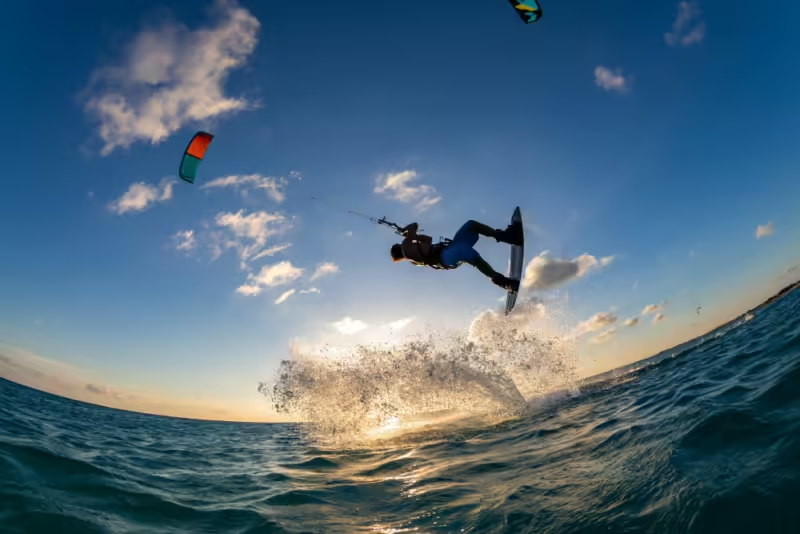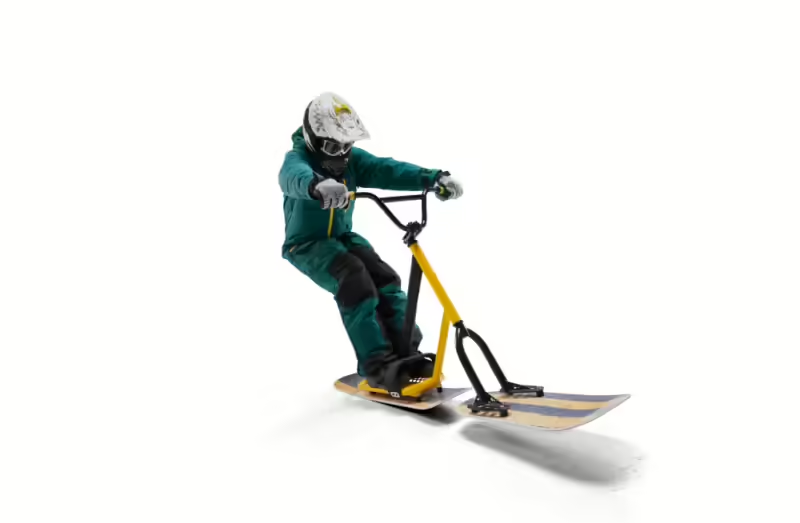Extreme sports, with their adrenaline-pumping allure, are increasingly gaining popularity. They offer thrill-seekers a chance to push their boundaries and live on the edge. But as exhilarating as they are, these sports carry inherent risks that can’t be ignored.
This article aims to shed light on the crucial aspect of safety in extreme sports. It’s not about curbing the thrill, but rather about ensuring that the thrill doesn’t turn into a life-altering mishap. From the right gear to the importance of training, we’ll delve into practical ways to keep the danger at bay while you chase the extreme.
The Appeal of Extreme Sports
Extreme sports are not merely about risk and adrenaline. They offer a unique appeal that goes beyond traditional sports. According to GatorGross, a popular website dedicated to extreme sports, they also provide participants with a sense of freedom, pushing boundaries, overcoming fears, personal achievements, and mental toughness. They’re about experiencing life on the edge, venturing out of comfort zones, breaking the norm, and craving the unpredictability offered by these sports. Second, the aesthetic aspect, such as stunning outdoor locales — mountains, deserts, or oceans — adds a visual component that further entices individuals. Finally, the thrill of overcoming natural elements, often in a one-on-one scenario, presents a distinct appeal to the human spirit.
Risks Associated with Extreme Sports
This section spotlights the inherent dangers synonymous with extreme sports. Below, we dissect the majority of injuries often encountered and explore the possible long-term effects.
Common Injuries in Extreme Sports
Participants in extreme sports often suffer a range of injuries, sprains, fractures, and dislocations being the most prevalent. For instance, rock climbers may experience intense strain on their upper bodies, leading to rotator cuff tears or tendonitis. Similarly, base jumpers expose themselves to a high risk of fractures, particularly in the lower extremities. It’s also common for surfers battling massive waves to sustain shoulder dislocations or knee ligament injuries.
Potential Long-term Effects
The extreme intensity of these sports, coupled with repetitive strain, may lead to long-lasting effects on the participants’ physical wellbeing. For example, continuous high-impact activities such as big wave surfing can cause chronic joint pain, while engaging repeatedly in skydiving can impact hearing capabilities due to the incessant exposure to wind pressure. Extreme athletes also run the risk of traumatic brain injuries, leading potentially to cognition issues or other neurological difficulties. Careful assessment of these risks and adequate preventative measures ensure a safer sport which, while thrilling, doesn’t compromise health in the long-term.
Key Safety Measures for Extreme Sports
Immersing oneself in extreme sports necessitates prioritizing safety, starting with a deep understanding of personal abilities and limits and accentuating the significance of rigorous training and skill development. Precise approaches to these crucial areas engender a robust safeguard against potential dangers.
Understanding Your Ability and Limits
Realistic self-assessment forms the first line of safety in extreme sports. An individual’s capacity and boundaries, in terms of physical strength, endurance, and inherent skill, dictate the level of preparedness for these high-risk activities. A person with a background in consistent weight training, for example, may find themselves well-equipped for rock climbing, capitalizing on their muscle strength and endurance. Conversely, someone whose fitness regime primarily includes cardio may be better suited for endurance-enabled sports such as marathon running or long-distance swimming.
Importance of Training and Skill Development
Beyond initial self-assessment, engaging in extreme sports mandates consistent training and gradual skill development. Training routines must be specific to the chosen sport. Snowboarders, for instance, need to work on their balance and lower body strength extensively. Simultaneously, motocross riders might focus on core strength and agility exercises. These specialized training routines augment a participant’s aptitude and safety in the chosen sport, thereby optimizing the benefits of engaging in such physically demanding and exhilarating activities.
Importance of Appropriate Safety Gear in Extreme Sports
Appropriate safety gear occupies a central position in extreme sports. It fosters safety and amplifies performance for athletes.
Choosing the Right Equipment
Selecting optimal gear is more than an accessory choice; it’s a fundamental element in extreme sports. Not all gear is manufactured equally, and each sport requires specific equipment to protect against unique hazards. For instance, in rock climbing, a helmet designed to prevent rockfall injuries is necessary. Choosing a helmet designed for cycling could overlook specific design features integral to a climber’s safety.
Ensuring the equipment fits the athlete correctly is another crucial factor. Poorly fitting gear such as a loose helmet or oversized pads can cause discomfort, hampers performance, and diminishes the level of protection offered.
Maintaining Your Equipment
Equipment maintenance, often overlooked, plays an equally significant role in ensuring safety. Regularly inspect equipment, checking for signs of wear and tear. Even the highest quality equipment deteriorates over time. In BMX biking, a worn-out bike chain could snap mid-jump leading to serious injuries.
Consult manuals for suggested maintenance intervals and procedures. If damages are detected, replace the equipment at the earliest. Remember, it’s not about prolonging the lifespan of the equipment, but about maintaining the highest level of safety and performance in extreme sports.
Impact of Weather and Environment on Extreme Sports Safety
Weather and environmental factors fundamentally shape extreme sports safety, having a profound influence on risk levels and participant strategies. Comprehensive understanding and apt adjustment to these elements can dramatically augment safety during extreme sporting activities.
Adjusting to Weather Conditions
Weather conditions can alter the dynamics of an extreme sport, making their proper comprehension and timely adjustment essential. Activities like skiing and snowboarding depend heavily on weather, with atmospheric pressure, humidity, temperature, and wind speed altering snow conditions, impacting both enjoyment and safety.
For example, in skydiving, changing wind speed and direction can significantly affect the control and landing of a parachute. By understanding these weather patterns and adjusting the gear or strategy accordingly, extreme sports enthusiasts can ensure their activities remain both thrilling and safe.
Influence of Terrain and Environment
Terrain and environmental features play an equally decisive role in extreme sports safety. Rock climbers, for instance, must know the specific formations and materials of the climbing surfaces, as the roughness, hardness, and hardness variations can introduce different risks.
In mountain biking, understanding the trail environment, such as the ground surface (gravel, dirt, or rocky), inclines, declines, and corners, is crucial to prevent mishaps and ensure smooth rides. By understanding the terrain’s characteristics and adjusting their performance and gear, participants can greatly reduce the risk associated with the task and add an extra layer of safety to their extreme sports adventure.
Role of Medical Fitness in Extreme Sports
Medical fitness plays a pivotal role in extreme sports, contributing significantly to both safety and performance. This section goes into details about regular fitness testing and the importance of sufficient recovery time in extreme sports.
Routine Fitness Tests
Regular fitness evaluations are integral to ensuring health and physical readiness. These tests often include cardiorespiratory endurance, strength, flexibility, and body composition assessments. For example, a rock climber requires high-level strength and endurance, so specific evaluations targeting these areas can be crucial. A fitness test can pinpoint potential weaknesses, helping develop targeted workouts to address these areas thereby reducing the likelihood of injuries during extreme sports.
Adequate Recovery Time
Recovery is a fundamental part of extreme sports that cannot be overlooked. It’s the period where the body repairs and strengthens itself following physically demanding activities. Insufficient recovery, or training when the body needs rest, could potentially lead to injuries, reducing both safety and performance. For instance, a snowboarder who has had an exhausting day on the slopes needs to permit adequate recovery time before the next round of exertion. In the spectrum of extreme sports, safety and high performance can thus be ensured by paying heed to the body’s need for rest and recovery.
Stay Safe
Staying safe while enjoying extreme sports is a blend of personal responsibility and environmental awareness. It’s about knowing your limits, training hard, and choosing the right gear. It’s understanding how weather can alter the thrill of skydiving or skiing, and how terrain can impact mountain biking or rock climbing. It’s about recognizing the importance of medical fitness and recovery time in sports like snowboarding. The safety of extreme sports, from mountain biking to skydiving, relies on protective gear, maintenance, training, and an understanding of the environment. So, while the adrenaline rush of extreme sports is undeniably exhilarating, it’s crucial to remember that safety should never take the back seat. After all, the thrill of the game is only as good as the safety measures in place.




